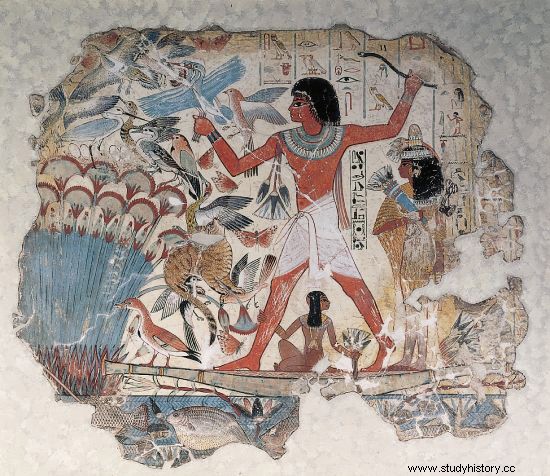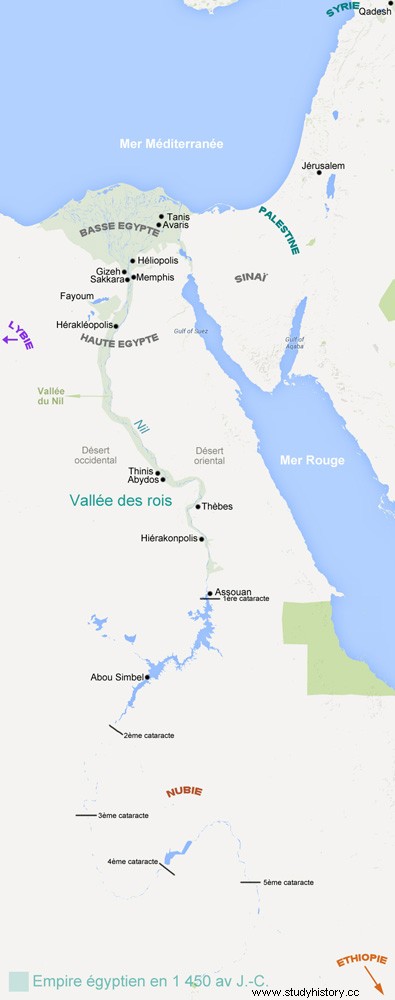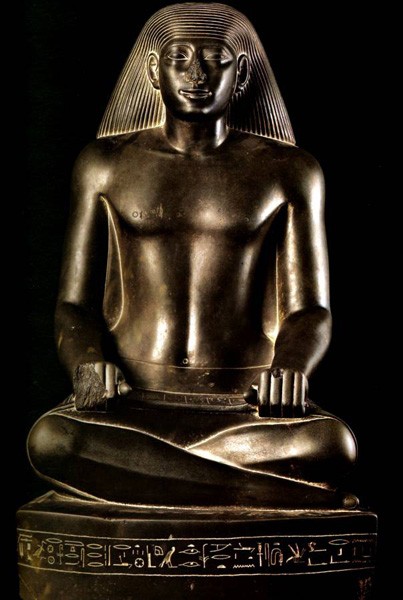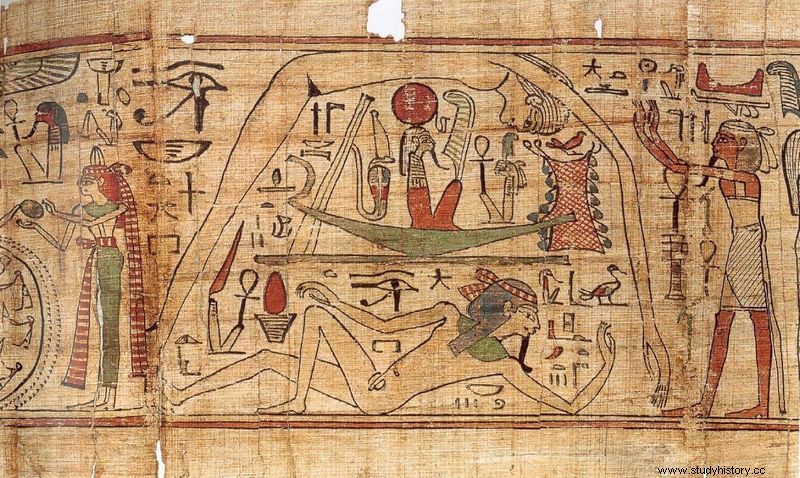FROM THE 21st TO THE 25th DYNASTY:

During the late period , Egypt of the pharaohs begins a slow decline because the evolution of the country becomes too slow compared to the rest of the world. The Egyptians find it difficult to adapt to the changing environment and they are being supplanted and dominated by their neighbors. As the pharaoh has great legitimacy in the eyes of the people, the princes and priests of foreign powers are crowned pharaohs to obtain absolute power. Under foreign influence, Egyptian art degenerated and became particularly coarse, anarchy and the civil war takes place.
AROUND 1070 B.C. AD
Smendes becomes pharaoh:
Pharaoh Smendès (whose origin is uncertain) of the city of Tanis takes control of northern Egypt. The south of the country is controlled by the high priests from the temple of Amun at Thebes . They are proclaimed kings and accumulate vast tracts of land and wealth that contribute to the growth of their power. Meanwhile, Libyan chiefs and princes increasingly take their autonomy.
CIRCA 945 TO 924 BC. AD (ACCORDING TO MANETHO)

Egypt is under the domination of the Libyans:
Libyan chiefs and princes take control of the western north delta. Sheshonq I who is initially a Berber Libyan prince, becomes pharaoh and takes power (He would also have lived for 2 or 3 years in Canaan and would be the Sesaq or Shishak of the Bible). He founded the “so-called” Libyan dynasty which would last around 200 years. He also took control of southern Egypt by placing members of his family in key clergy positions.
The power of the Libyans dwindles as a rival dynasty emerges in the delta at Leontopolis and the Kushites threaten the south of the country. The Kushites are called Ethiopians by the Greeks and they have been in rivalry with the Egyptians for more than 2 millennia.
TOWARDS 727 B.C. AD
Egypt is invaded by the Kushites:
The Kushites take control of Thebes , invade northern Egypt, then finally the delta.
CIRCA 700 – 667 BC
Assyrians seize power:
Assyrians plunder Thebes and its great temples. They occupy the city of Memphis and repel the Kushites in Nubia . The Assyrian invasion leaves deep wounds in the minds of the Egyptians.
From the XXVIth to the XXXth dynasty:

The late period is going through a period of strong instability characterized by successive seizures of power by foreign sovereigns, interspersed with short periods of independence. Although from very different cultures, foreign rulers adapted to the Egyptian model and respected its culture. During periods of independence, Egyptians experienced short but strong periods of economic, cultural, artistic, intellectual and religious revival.
EN 653 BC. AD
Libyans drive Assyrians out of Egypt:
The Assyrian Empire is too large to control and uprisings are beginning to tear it apart. This favored the emergence of the Saïte dynasty of Libyan origin and the Libyan king Psametik I drives out the Assyrians with the help of Greek mercenaries.
IN 525 B.C. AD
Invasion of the Persians:
The mighty Persians, led by Cambyses II conquer Egypt and capture Pharaoh Psammetichus III at the Battle of Pelusium. Cambyses II then takes the official title of pharaoh , but ruled from his hometown of Susa leaving Egypt under the control of a satrapy (administrative division of the Persian Empire). Although some revolts against the Persians were successful, the Egyptians failed to overthrow them permanently.
ERS 404 TO 398 B.C. AD

Reign of Egyptian pharaoh Amyrtaeus:
He takes over the reins of the country and temporarily drives out the Persians. The next dynasty is a mixture of Egyptian governments with no real power.
ABOUT 360 TO 343 BC. AD
Reign of Egyptian Pharaoh Nectanebo II:
He is the last independent Egyptian ruler.
Learn about the Persians, Assyrians and the Middle East during antiquity.
